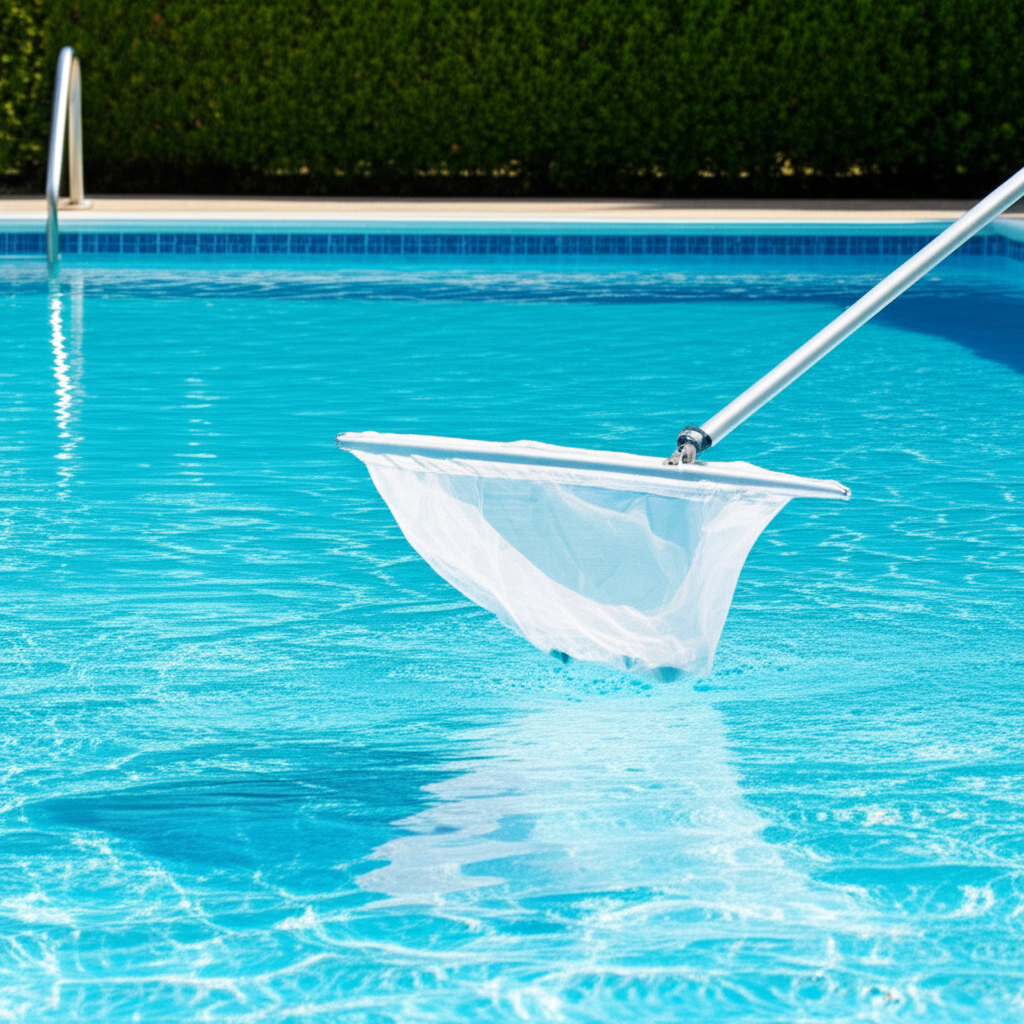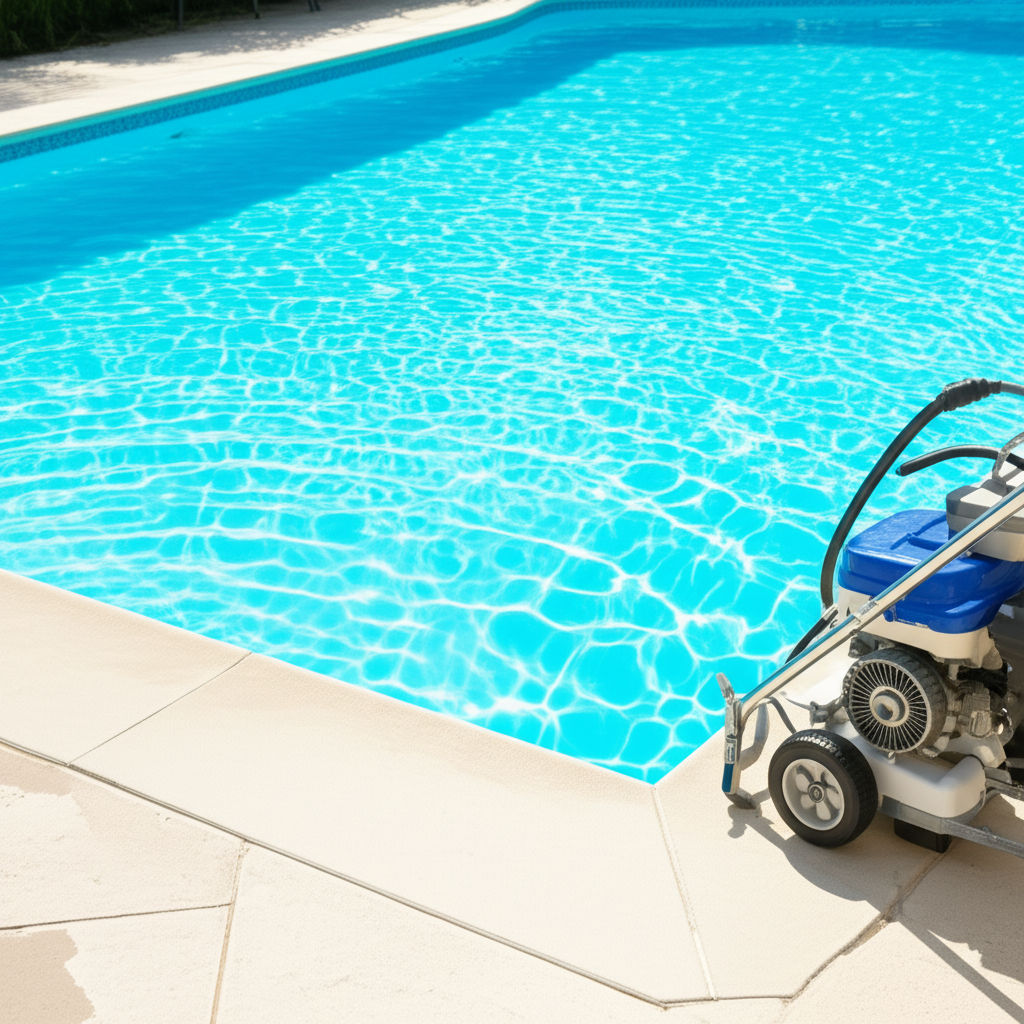- Why Your Pool Demands a Deep Clean
- When to Tackle Your Pool Deep Clean
- Essential Tools for an Effective Pool Deep Clean
- Mastering the Pool Deep Clean: A Step-by-Step Guide
- Spring Cleaning Pool: Your Seasonal Renewal
- Maintaining Your Stunning Results
Pool Deep Clean is more than just scooping out leaves; it’s a comprehensive approach to revitalizing your backyard oasis, ensuring it’s not only sparkling clean but also healthy and inviting for every plunge. While routine maintenance keeps most pools ticking over, a periodic deep clean is crucial for tackling persistent issues, improving water quality, and extending the life of your equipment. The good news is that with the right strategy, achieving stunning results can be far less daunting than you might imagine.
Why Your Pool Demands a Deep Clean
Regular skimming and chemical balancing are essential, but they don’t address everything. Over time, unseen contaminants build up, from microscopic algae spores adhering to surfaces to mineral deposits along the waterline and debris settling in hard-to-reach corners. A deep clean goes beneath the surface, offering several vital benefits:
Optimal Water Quality: It eliminates hidden algae, bacteria, and biofilm, resulting in crystal-clear, sanitized water that’s safer and more pleasant to swim in.
Enhanced Longevity: Removing grime, scale, and organic matter from walls, floors, and equipment components prevents deterioration and corrosion, protecting your investment.
Improved Efficiency: A clean filter, skimmer, and circulation system work far more effectively, reducing the strain on your pump and potentially lowering energy costs.
Aesthetics and Enjoyment: There’s nothing quite like a truly pristine pool. A deep clean restores its beauty, making your swim experience more enjoyable and your backyard visually appealing.
When to Tackle Your Pool Deep Clean
While the need for a deep clean can sometimes be prompted by stubborn algae blooms or persistent cloudiness, there are key times when it’s particularly beneficial:
Spring Cleaning Pool: This is perhaps the most popular and critical time. After months of dormancy or reduced use over winter, your pool often needs a thorough overhaul to prepare for the swim season. This involves clearing winter debris, addressing built-up grime, and rebalancing the water for optimal summer performance.
Before or After Major Events: If you’re hosting a big pool party or closing your pool for the season, a deep clean ensures it’s in top condition.
When Issues Arise: If you’re struggling with recurring algae, cloudy water that won’t clear, or strange odors, a deep clean can be the reset button your pool needs.
Essential Tools for an Effective Pool Deep Clean
Before you begin, gather your arsenal. Having everything at hand will make the process smoother and more efficient.
Leaf Skimmer/Rake: For surface debris and heavier items from the bottom.
Pool Brush: Stiff bristled for concrete/plaster, softer for vinyl/fiberglass.
Pool Vacuum: Manual or robotic. A heavy-duty manual vacuum is often best for a true deep clean to target specific areas.
Telescopic Pole: For attaching brushes, skimmers, and vacuums.
Tile/Scum Line Cleaner: Specialized product for waterline buildup.
Pool Test Kit/Strips: Accurate water chemistry is paramount.
Water Balancing Chemicals: pH increaser/decreaser, alkalinity increaser, calcium hardness increaser, chlorine shock, algaecide, clarifier.
Safety Gear: Gloves and eye protection are recommended, especially when handling chemicals.
Mastering the Pool Deep Clean: A Step-by-Step Guide
Follow these steps for a methodical and effective deep clean, leading to effortlessly stunning results:
1. Remove Major Debris: Start by using your leaf skimmer or rake to remove leaves, twigs, insects, and any other large debris floating on the surface or sitting on the bottom. The less your filter has to contend with, the better.
2. Brush Walls and Floor Thoroughly: Attach your pool brush to the telescopic pole. Systematically brush every inch of your pool’s walls, floor, steps, and benches. Pay extra attention to corners, crevices, and areas where algae or staining might be present. This dislodges contaminants, allowing them to be filtered or vacuumed away.
3. Clean the Waterline and Tile: Don a pair of gloves and, if necessary, turn off your pump. Apply a specialized tile or scum line cleaner to the area where water meets the pool surface. Scrubber brushes or even a magic eraser can be highly effective here. This ring of grime often contains body oils, lotions, and environmental pollutants, and needs dedicated attention.
4. Vacuum the Pool: After brushing, let the debris settle for an hour or two (if you have a manual vacuum, the pump should be off). Then, vacuum your pool thoroughly. If using a manual vacuum, consider vacuuming to “waste” (backwash/drain) if you have excessive debris or algae. This bypasses your filter, sending the dirty water directly out of the pool, preventing it from recirculating contaminants. Remember to replenish the water afterwards. Robotic vacuums are convenient but ensure their collection bins are emptied frequently.
5. Test and Balance Water Chemistry: This is a crucial step. Use your test kit to assess pH, alkalinity, calcium hardness, and sanitizer levels. Adjust them one at a time, allowing time for each chemical to circulate and dissipate before retesting. Proper balance ensures chemical effectiveness and protects your pool’s surfaces and equipment.
6. Shock the Pool: Once your basic chemistry is balanced, it’s time to shock. This involves adding a high dose of chlorine (or non-chlorine shock) to kill off lingering bacteria, algae, and destroy chloramines (spent chlorine compounds that cause strong odors). Always follow manufacturer instructions for dosing and application, typically performed at dusk.
7. Clean or Backwash Your Filter: After shocking and allowing the pool to circulate for at least 8-12 hours, your filter will have worked overtime. Backwash your sand or D.E. filter, or remove and clean your cartridge filter. A clean filter is vital for maintaining water clarity.
8. Add Clarifier (Optional, but Recommended): Once the water chemistry is stable and the filter is clean, if you still notice a slight haze, a pool clarifier can help by clumping tiny particles together, making them easier for your filter to capture.
Spring Cleaning Pool: Your Seasonal Renewal
When it comes to Spring Cleaning Pool, these deep cleaning steps are amplified. Beyond the standard procedure, you’ll want to:
Inspect All Equipment: Check your pump, filter, heater, and auto-cleaner for any signs of wear, damage, or leaks that may have occurred over winter.
Replace Worn Parts: This includes O-rings, gaskets, or any visibly cracked components before they become larger issues.
Check Water Circulation: Ensure all jets are open and functioning, promoting healthy water movement.
* Consider a Specialty Stain Remover: If winter left rust or organic stains, now is the time to tackle them with appropriate products.
Maintaining Your Stunning Results
A deep clean provides a fantastic foundation, but consistent maintenance is key to keeping your pool in pristine condition. Regular skimming, weekly brushing, routine water testing, and scheduled filter cleaning will prevent the need for frequent intensive deep cleans. Proper circulation and consistent sanitization are your best allies in maintaining that effortless, stunning sparkle.
By committing to a thorough pool deep clean, especially as part of your spring opening routine, you’re not just cleaning; you’re investing in crystal-clear water, a longer-lasting pool, and countless hours of worry-free enjoyment under the sun.




